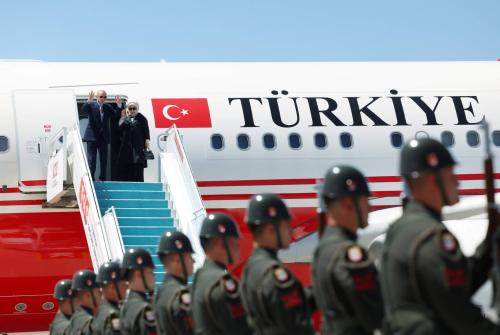Amazingly, it now appears possible that the international community and the Islamic Republic of Iran could soon reach at least an interim deal on the Iranian nuclear weapons program, despite some initial glitches in a recent negotiating session. Even such a possibility, resulting from the election of President Hasan Rouhani this summer, is mind-boggling.
As skeptics rightly warn, however, we must curb our enthusiasm until we can see the details of any such deal. Iranian hard-liners still exercise a great deal of influence and will likely try to oppose, weaken and/or cheat on any such deal.
So what distinguishes a good accord from a bad one?
The first issue of contention will be the terms of any interim agreement. The Obama administration is considering unfreezing some of Iran’s assets in the U.S. that we have held since events such as the Iranian revolution of 1979.
Other outside powers might take similar steps. But this show of goodwill would occur only if Iran froze most or all of its nuclear programs that are producing enriched uranium of a type that can be further enriched to make a nuclear bomb and also froze construction of a new nuclear reactor.
Some will say we should show Iran no mercy before a true, verifiable, lasting deal. To me, though, an interim accord gives Iran’s new president some momentum back home, so long as the core sanctions remain in effect and so long as Iran does freeze nearly all of its nuclear activities.
What about long term?
The key issue, however, is a long-term deal. What are the core requirements for an acceptable outcome?
Iran has a number of assets that international inspectors routinely monitor that need to be addressed in any deal:
Centrifuges. Iran operates perhaps 10,000 centrifuges to separate Uranium-235 (the type needed in nuclear bombs) from U-238 (in nature, uranium is 99.3% U-238).
Enriched uranium. There are, roughly speaking, three or four steps to taking uranium found in nature to bomb-grade material. Iran has several tons of low-enriched (3.5% U-235) uranium by now, even though under United Nations resolutions, it is not supposed to. Iran has a couple hundred kilograms of 20% U-235, again in violation of international law. Then, the final stage requires that the concentration of U-235 has to be increased further, first perhaps to 60% and then to 90% before it is considered “weapons grade” for use in a nuclear bomb.
New nuclear reactor. A big new reactor at Arak could begin operations in 2014. This reactor can be used to produce plutonium , the other fissionable material besides U-235 that can drive a nuclear explosion. Once the reactor starts to operate, it will be very hard to bomb because it will then be highly radioactive.
Hard-liners in the U.S., Israel and elsewhere will say Iran should give up all the above before getting any sanctions relief. That would be our ideal outcome, but we must be careful not to let the perfect be the enemy of the good.
If Iran agreed
My own take is that, if the reactor can be dismantled and the vast majority of the centrifuges either dismantled or destroyed, and Iran’s stock of 20% U-235 converted into reactor fuel (for a science reactor or for sale abroad), that would be a good start on a fair deal. Stocks of lower-enriched uranium should also be reduced and capped.
Beyond that, Iran must promise not to rebuild its stock of enriched uranium and allow international inspectors to monitor fixed nuclear sites while also following up leads on any suspected illicit sites.
If Iran agreed to the above, we can lift most international sanctions and some U.S. sanctions over a period of months. And it would be understood that international sanctions could be reimposed if Iran cheated on its promises, or impeded international monitors.
With such a deal, Iran would still have its bragging rights that it had kept some of its nuclear technology as long as we can verify Iran’s future compliance with the deal. But we can live with that. And though such an accord would not permanently guarantee a non-nuclear Iran, it could probably accomplish more than a military strike could, while also greatly slowing Iran should it ever decide to break out of the accord.
It might not be a pretty outcome, but it is far preferable to the alternatives for all countries concerned. Only time will tell, however, if such a deal is doable.
The Brookings Institution is committed to quality, independence, and impact.
We are supported by a diverse array of funders. In line with our values and policies, each Brookings publication represents the sole views of its author(s).



Commentary
Op-edWhat Iran Nuclear Accord Should Look Like
November 15, 2013